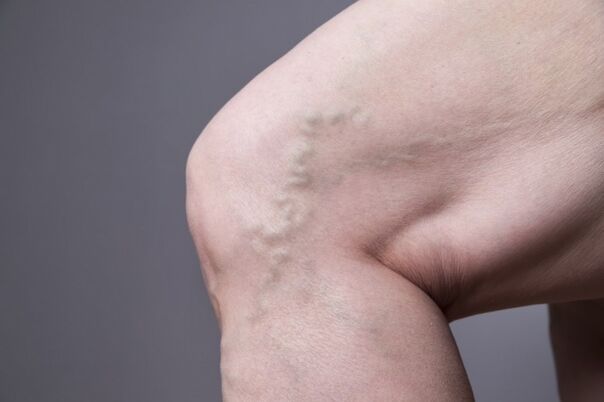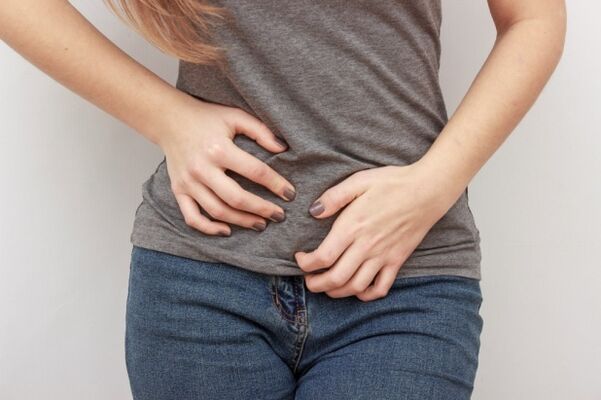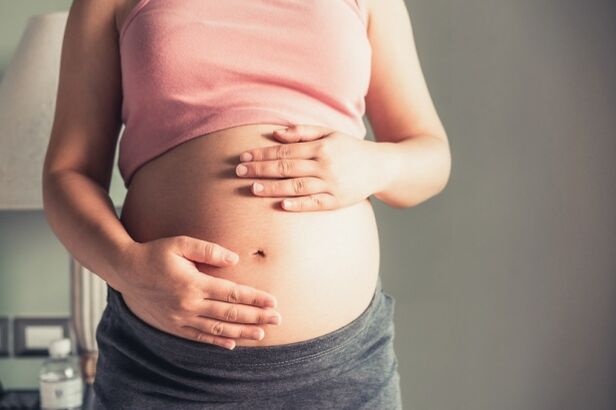Chronic venous insufficiency and varicose veins are widespread diseases: according to statistics, every third party faces in developed countries.The special risk group includes representatives of fair sex, to whom this pathology offers physical and psychological discomfort.In this article, we will examine why vascular diseases occur in women, what are their signs and symptoms, what to do for the treatment and prevention of this disease.
Varicose veins: causes of varicose veins in women
According to statistical data, men are less likely to suffer from varicose veins than women whose vessel disease occurs 1.5 times more often.What caused the characteristic between the sexes of this pathology?

- Characteristics of the hormonal background.During the monthly cycle, the hormonal background of a woman is subject to fluctuations, and during pregnancy, childbirth, lactation and menopause, these changes become even more significant.The ratio of female sex hormones (estrogens and progesterone) has a direct effect on the state of the vascular walls and blood viscosity.
- Hormone therapy.Reception of oral contraceptives combined with hormone therapy and taking the hormonal context, thus causing a change in the relationship of estrogens and progesterone in the body.
- Wear shoes in heels and tight pants.Unknown shoes, narrow underwear and jeans - all this causes a violation of blood circulation in the lower limbs and the basin, leading to the development of varicose veins.
In addition to these prerequisites, exclusively women, for the development of pathology, varicose veins in women can cause the following factors:
- Genetically determined predisposition.According to statistics, a trend in varicose veins is observed in 60% of cases if one of the parents suffers from this pathology.
- Significant excess weight.Obesity is one of the factors of the occurrence of varicose veins, as the lower limbs undergo increased pressure.
- Excessive load on the legs.If you are professionally engaged in the race, the jump or the ceiling, beneficial conditions are created for the development of vein problems.
- Disruption of the blood circulation caused by a fixed installation.If you spend most of the day sitting or standing, this is a serious condition prior to the development of venous diseases.
- Unstable nutrition.A diet, poor fiber, vitamins and trace elements, leads to disorders that affect the walls of blood vessels and the composition of blood.In addition, an unbalanced diet can cause constipation, which is also able to lead to changes in the veins - in particular, to varicose veins of the basin.
- Diseases of endocrine and cardiovascular systems.Endocrine disorders cause changes in the hormonal context, which, in turn, become prerequisites for the development of varicose veins.Cardiovascular pathologies (in particular-hypertension) also cause the development of problems with the veins.

Varices of pelvic veins in women
The pathological expansion of the basin's vessels is a common problem, which is faced with 15 to 25% of women of childbearing age.This disease is often confused with infectious and inflammatory processes located in the reproductive organs of the female genitarine system.As part of the poorly established diagnosis, inappropriate treatment is prescribed and the patient does not receive relief.Consequently, the problem of adequate diagnosis and therapy of varicose veins of the basin is an urgent problem of modern phlebology and gynecology.
The blood supply of pelvic organs occurs due to uterine and ovarian veins, as well as uterine-vaginal venous plexus, the vaginal bubble, the formidable plexus of the rectum, etc.It is generally caused by the stagnation of blood, which can be due to the following premises:
- Life of life;
- previously transferred gynecological diseases;
- Hormonal background violations (in particular - high estrogen level);
- history of pregnancy and childbirth;
- Congenital violations and acquired from connective tissue (namely a collagen disadvantage).
Opinion is an expert feature of this venous disease in women is the presence of chronic pelvic pain syndrome.It is represented by pain at the bottom of the abdomen, radiating in the pubic area, the sacrum and the crotch.
The peak of pain usually falls on the second half of the menstrual cycle, supplemented by a severe premenstrual syndrome and dysmenorrhea.Psychosomatic disorders can reach the symptoms mentioned.

As indicated above, the diagnosis of pathology is difficult insofar as the symptoms of this vein disease in women can be interpreted by mistake as signs of purely gynecological problems.Consequently, to carry out the right diagnosis, transvaginal ultrasound, dopplerography, phlebography, in some cases, diagnostic laparoscopy, will be necessary.
For the treatment of varicose veins of a small pool, a conservative and operational approach is used.
In the first case, the aim of therapy is to increase the tone of the venous walls, the normalization of the nature of the blood flow and the viscosity of the blood.To solve these problems, the patients are prescribed Venotonia, the realization of hianidotherapy sessions, ultrasounds and magnetotherapy, as well as the exercises of treatment of the exercise.If the conservative treatment of this basin disease is ineffective, surgery is carried out - sclerosis or embolization with veins in pregnant women.
Problems with Vienna in pregnant women
Varicose veins are the problem of most pregnant women.This is due to the changes that occur in the pregnant woman's body during gestation.During this period, there is a complete restructuring of the hormonal background, which is directly related to the state of blood vessels.For example, the growth of estrogen leads to changes in the structure of the muscular layer of the vein walls and the expansion of blood vessels.

In addition to the hormonal changes that accompany the gestation period and the birth of a baby, pregnancy and childbirth can cause the development of venous diseases in pregnant women for other reasons.First of all, it is an increase in body weight and the corresponding increase in the load on the lower limbs, as well as excessive stress that a woman in work suffers during work.
During pregnancy, there is an increase in the total volume of blood in circulation, due to an increase in the plasma content and red blood cells.
Vein diseases in women: symptoms and signs
Depending on the stage of development, the varicose veins of the legs manifest themselves in different ways:
- It is easy to neglect the initial phase of the pathological process, since its manifestations are usually minimal.Small spider veins appear on the legs, in the evening there is a slight feeling of discomfort and at the end of the day there may be slight swelling.Even if the described clinical picture does not cause particular concern, as soon as you experience these symptoms, it is recommended to consult a doctor.
- If the disease has not been found in the initial stage and the treatment has not been started in time, the vein problems in women are exacerbated.The venous grid is increasingly pronounced, the characteristic nodes and cereals are clearly distinguished from the skin, swelling and a feeling of burst in the lower limbs cause serious discomfort.
- If the disease has not been treated or treated ineffective, it enters a neglected form.The affected veins are very highlighted under the skin, there is constant edema, convulsions occur at night, the skin in the legs of the legs can change color and covered with trophic ulcers.
Venus diseases in women: treatment
Two main approaches to solve this problem are distinguished: conservatives and surgicals.The first of them is generally used in the early stages of the development of pathology, while the second is justified to combat the subsequent stages of the disease.

Conservative therapy includes taking medication, using funds for external use, visiting physiotherapy sessions, wearing compression knitting, correction of physical effort, daily routine, nutrition and alcohol consumption diet.In addition, you can use additional tools to combat varicose veins - for example, Norman® Legs cream.Its regular application on the lower limbs helps get rid of swelling, fatigue, severity and discomfort in the legs, the disappearance of night crises and a decrease in the expression of the vascular pattern.
Due to natural composition, the cream can be used during pregnancy.
Surgical intervention is intended for the complete or partial elimination of varicose veins.Modern vascular surgery can offer the following types of operations:
- Combined phleectomy.
- Laser coagulation.
- Radiofrequency coagulation.
- Sclerosis.
If we are talking about the treatment of vein diseases in women aged 50 to 60 and in older patients, surgery is generally not carried out because it is stress for the body.























